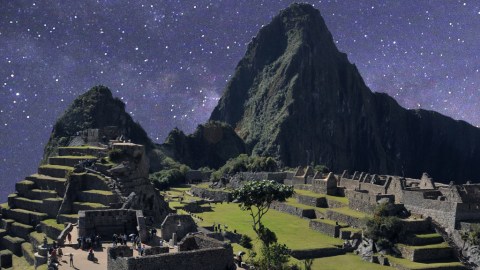“Space Archaeologists” Find Hundreds of Pyramids, Lost Tombs, and Forgotten Cities

Archaeologist Sarah Parcak is allowing anyone in the world with an internet connection to participate in discovering new archaeological sites, and protect vulnerable archeological sites from looting. Using the $1 million she got from winning the TED Prize as well as support from the National Geographic Society and DigitalGlobe, she recently launched GlobalXplorer. The organization seeks to engage people from all backgrounds in finding and preserving archaeological sites through the use of satellite images. The methods in question have, according to GlobalXplorer’s website, already produced impressive results. It notes:
So far, Dr. Parcak’s techniques have helped locate 17 potential pyramids, in addition to 3,100 potential forgotten settlements and 1,000 potential lost tombs in Egypt — and she’s also made significant discoveries in the Viking world and Roman Empire. With the help of citizen scientists across the globe, she hopes to uncover much, much more… So far, Sarah’s methods have proved over 90% successful in producing significant discoveries.
Parcak’s vision uses modern satellite technologies to scan the world for archeologically promising data. With the power of crowds, there are sure to be many fascinating finds at staggeringly fast rates.
Currently, the organization is working primarily in Peru, whose rich historical sites have been plundered by many looters. One way GlobalXplorer prevents looting is by allowing users to note which regions seem vulnerable. Archaeologists can vet the cites that illicit high rates of concern. Then, collaborating with the Peruvian government, the organization is able to help protect those areas. This is a welcome solution to a centuries-old problem. The Guardiannoted back in 2011, for example, how conquistadores and contemporaries alike had reduced the grand remains of the Moche civilization of northern Peru to a “lunar landscape” and one of the largest pyramids in pre-Columbus Latin America to “an eroded, plundered shell.”
Some archeologists have criticized Parcak’s vision, arguing that her method of crowdsourcing the analysis of satellite images may actually work to encourage looting – by inadvertently pointing them to where the loot is. However, such concerns are moot, according to Kristina Killgrove’s article on the program for Forbes. She describes the robust system through which GlobalXplorer protects against mistakenly informing looters:
The millions of little satellite tiles are displayed to users randomly. The user cannot pan out, navigate around, or see additional nearby tiles. There are no location references or coordinates shown to the user of the platform either. Rather, the unique tile ID is matched with location information after a GlobalXplorer user tags it. The data are then sent to Parcak and her team for further analysis. In this way, users are collecting data without compromising sensitive information about potential archaeological sites.
Although GlobalXplorer uses the wisdom of crowds, it also conceals information to protect against being exploited.
The approach of allowing virtually anyone to contribute information while simultaneously implementing measures to regulate them is an approach shared by arguably the largest information crowdsourcing project: Wikipedia. Wikipedia famously allows anyone to edit any entry while also subjecting every change to the scrutiny of administrators, who vet arguments submitted by readers both for and against the edits. Thus, like GlobalXplorer, Wikipedia has implemented rigorous procedures to allowing users to contribute whatever they like while also minimizing undesirable outcomes of unchecked freedom.
In addition to GlobalXplorer, there are several other examples of researchers using the wisdom of crowds to make discoveries. Phylo, for example, is a game developed at McGill University. It loosely resembles Tetris and exploits humans’ abilities for pattern-recognition to help decode genetic diseases. And Foldit made headlines after just three weeks of its release in 2011 for revealing insights into the structure of an enzyme related to AIDS. There’s little reason to doubt, then, why tapping crowds for archaeological insights shouldn’t be promising as well. Dr. Parcak’s idea promises to unlock torrents of exciting archaeological findings all over the world.





